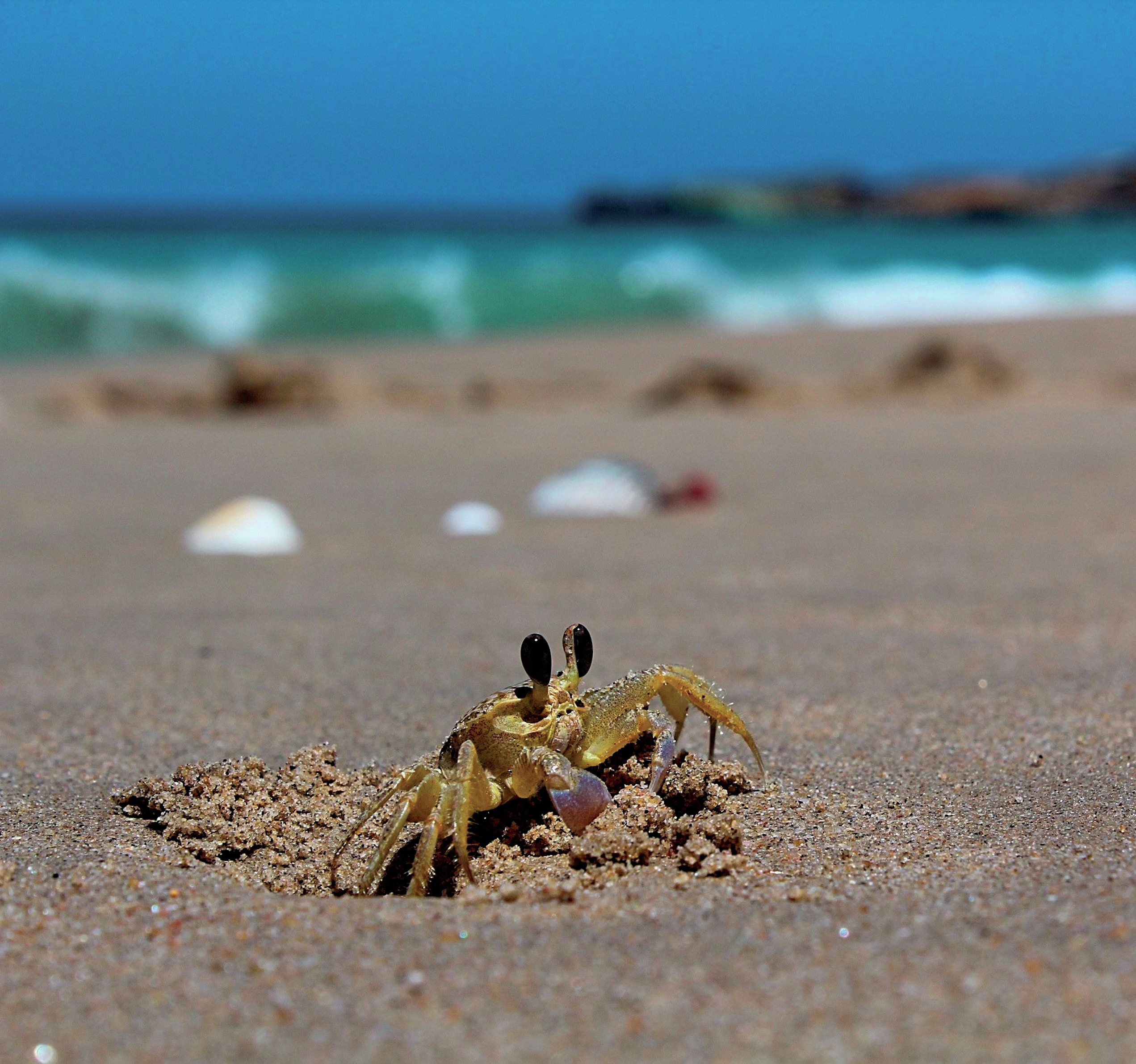
You may have found crabs in rock pools or have caught them from the sea using bait on a fishing line. As a result, you might think that crabs are aquatic animals. But although the Atlantic ghost crab shown in this picture is near the sea, the adult animals are terrestrial, living in burrows that they dig in the sand. These burrows can be over a metre deep and are usually above the intertidal zone. Burrows of old adults have been found in sand dunes over 300 metres inland from the sea.
Adults are generally active at night and are omnivores, feeding on shellfish, insects, plant material and even each other. They can swivel their prominent, stalked eyes through 360°, giving them all-round vision. They communicate by hitting the sand with their large, white claws. Like all crustaceans, the gas exchange system of the Atlantic ghost crab consists of gills. Although the proportion of oxygen in air is around 21% and in sea water less than 1%, without the support of water the crab’s gills collapse, severely reducing its surface area for gas exchange.
Your organisation does not have access to this article.
Sign up today to give your students the edge they need to achieve their best grades with subject expertise
Subscribe




